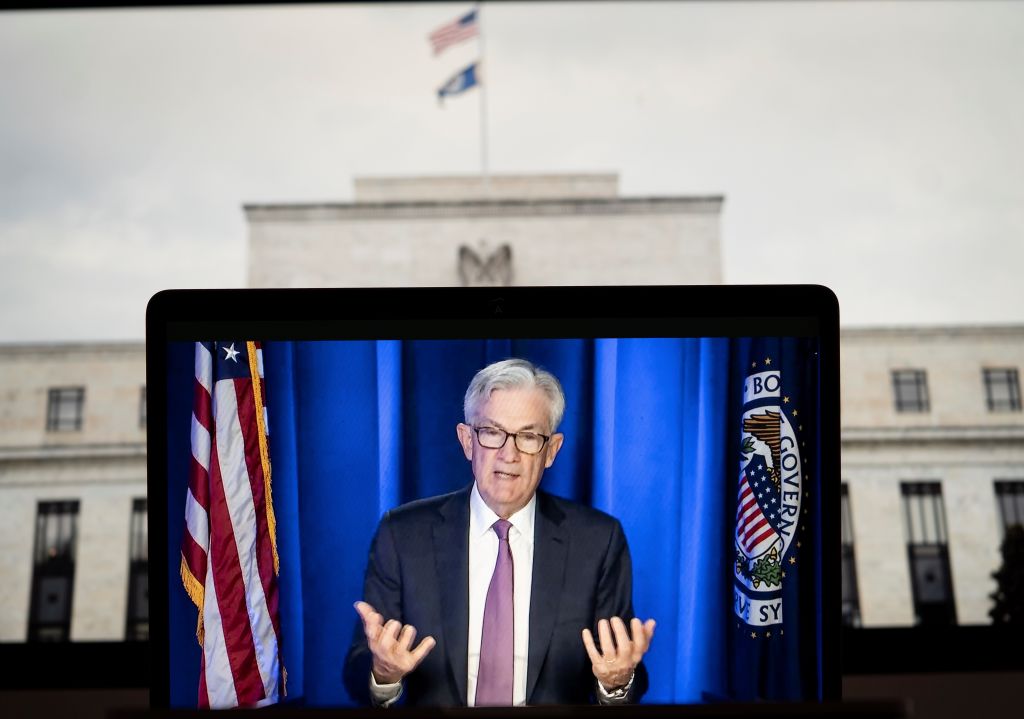
During the 1960s and 1970s it took a dozen years for a toxic cocktail of excessive fiscal stimulus, misguided monetary policy focused on symptoms rather than causes, and bad luck on the supply side to generate stagflation—a combination of high inflation and a stagnant economy. Stagflation and political dysfunction corroded public trust in government, undermined public confidence that the country was on the right track and brought down the Presidencies of both Gerald Ford and Jimmy Carter.
History has sped up over time and in a little more than a year policy errors like those of 1960s and 1970s along with bad luck have brought the U.S. to the brink of stagflation. Income support payments to households and businesses in 2021 far exceeded any reasonable estimate of income reductions due to COVID-19. The Federal Reserve in ways reminiscent of the 1970s proclaimed that inflation was transitory and isolated to a few sectors even as labor shortages became unprecedentedly severe and pervasive. And now the Ukraine crisis is leading to huge increases in food and energy prices. It is now likely that inflation will continue to accelerate for at least several more months as commodity price hikes work through the system. Then it may recede but not in all likelihood anywhere near the Fed’s 2 percent target.
With inflation now running above 7 percent it is not surprising that almost three times as many Americans think the country is on the wrong track as think it on the right track.
Small businesses are more likely to cite inflation as their principal worry as any time since the beginning of the Reagan disinflation. The Dollar Store has become the $1.25 store as consumers are seeing the worst decline in decades in the purchasing power of their wages.
Unfortunately there are no easy and painless ways of insuring that the economy enjoys a soft landing. It was delusional even before recent food and oil price explosions to believe given labor shortages and wages accelerating that inflation would melt a way. Hope is not a strategy. While there are certainly areas where enhanced antitrust action is warranted, scapegoating corporate greed for inflation is preposterous in the view of almost all serious economists. If there is a single clear lesson from the 1970s it is that Richard Nixon’s price controls were a disaster that actually exacerbated the build up in inflation by reducing the pressure for needed monetary restriction.
The urgent prerequisite for success in achieving a soft landing is a clear recognition by both the Administration and the Fed that the economy’s current level of demand is unsustainable and has been for some time. We now need not to celebrate our sugar high but to diet. The more we allow current excesses in both financial markets and the real economy to build up the more painful the ultimate adjustment will be.
I welcome the Fed’s moves to phase out quantitative easing and raise interest rates. But they are insufficient. The Fed has not explained how with hundreds of economists on staff and almost every employer in the country reporting cost increases they were passing on, it manage to underestimate 2021 inflation by a factor of 3. Without such an explanation it is hard to be confident that they now have things under control.
Nor has the Fed signaled an intention to abandon the operating framework that brought us to this point by ruling out monetary tightening until it was completely clear that the economy was overheating. The President‘s new nominees to the Board while clear on their commitment to disinflation have yet to make clear their recognition that inflation has its roots in an overheated economy.
The Fed is the most important actor with respect to inflation. But Biden Administration policy is crucial, as well. Unfortunately the Administration often emphasizes ideas that are good on the merits but will have negligible effects on inflation for years like beginning antitrust actions in a few industries or building new infrastructure. Worse it advances ideas that in terms of inflation are counterproductive like Buy America policies that mandate shifts from lower to higher cost suppliers. As another example, if the Keystone pipeline had not been rejected it’s probable that it would be providing more oil to America than we are losing from the Russian embargo.
A more constructive agenda would focus on cost reduction for the benefit of consumers by letting market forces work. Retiring Justice Stephen Breyer’s major contribution to American policy was his work with Senator Kennedy to deregulate airlines. Why not reduce shipping costs by repealing the obsolete Jones Act? At a time when housing costs are soaring why not eliminate restrictions on lumber imports from Canada? More broadly tariff reductions directly operate to reduce prices for consumers and to make exporters more competitive by holding down their input costs.
Some policy problems are intractable. We lack the knowledge or the tools to resolve them. Not inflation. We know what must be done to reduce it. And we know that the slower we are to act, the larger and more painful will be the regimen of restoring price suitability. It’s time to act.
More Must-Reads from TIME
- Cybersecurity Experts Are Sounding the Alarm on DOGE
- Meet the 2025 Women of the Year
- The Harsh Truth About Disability Inclusion
- Why Do More Young Adults Have Cancer?
- Colman Domingo Leads With Radical Love
- How to Get Better at Doing Things Alone
- Michelle Zauner Stares Down the Darkness
Contact us at letters@time.com